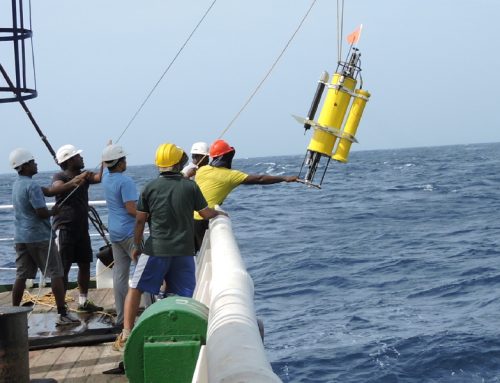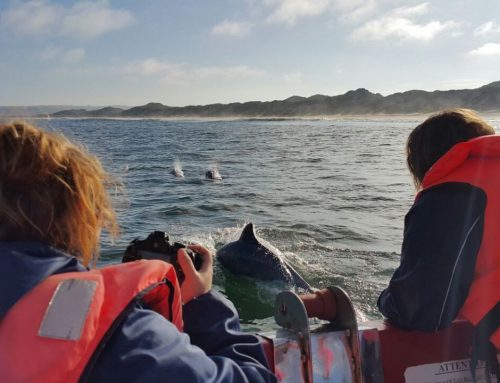 Christiana could not get enough of Dario’s spekboom custard. She asked for more, which is not the done thing at Cube where the whole idea is that you get 20 starter-sized bites with unexpected flavour combinations and textures.
Christiana could not get enough of Dario’s spekboom custard. She asked for more, which is not the done thing at Cube where the whole idea is that you get 20 starter-sized bites with unexpected flavour combinations and textures.
Cube is celebrity South African chef Dario D’Angeli’s talk-of-the-town restaurant, or shall I say, taste emporium, in Joburg.
Christiana Figueres is the United Nations’ Climate Change Chief.
She said the spekboom custard tasted like lemon curd, which she loves, but I think the reason Christiana wanted more is that she felt a bit guilty about the Alaskan crab on the menu, and she wanted to offset its carbon footprint with spekboom.
Spekboom (Portulacaria afra) has been attributed with carbon-storing super powers. It is being hailed as South Africa’s answer to subtropical forests.
Data gathered over the last seven years on this leafy succulent which grows in thickets in the semi-arid areas of the Eastern Cape shows that carbon storage in intact spekboom thicket exceeds 20 kg carbon per square metre of vegetation, which is equivalent to that of moist subtropical forests. Something Christiana well knows.
She had jetted into Joburg on her way back from six days of carbon talks in Bangkok aimed at trying to get the world’s leaders to extend the legally binding carbon emission reduction targets established by the Kyoto Protocol which expires at the end of next year.
Signed in 1997 and enforced in 2005, the Kyoto Protocol saw most developed nations commit to specified targets to curb their GHG emissions or Green House Gas emissions to spell it out, with carbon dioxide as the principal GHG.
Boy, did Christiana, Dario and I have a lot to talk about. Between taste sensations she explained that Japan and Russia don’t want to extend the protocol because it doesn’t include China and the United States – the world’s largest polluters.
The irony of Japan’s churlishness is that the protocol was signed in Kyoto, the ancient capital of Japan.
Kyoto, as Dario explained, is also the home of Japanese cooking, known as Kyoto cuisine, which, like Cube, is based on lots of startling taste bites, with the exception of tofu. Kyoto is the cradle of tofu but there is nothing startling about tofu, although Dario is working on something for his next menu.
I hazarded that he might be thinking along the lines of bite-size leg of tofu but I didn’t have a chance to ask him because Christiana was demanding more than her bite-size portion of spekboom custard; she wanted a bowl.
Dario looked a bit startled and said he was fresh out of spekboom. I came to the rescue as a friend of mine down the road from Cube in Parktown North is growing rows of the stuff in a hothouse. He markets bunches of spekboom as “carbon credit bouquets”.
I gave Christiana a large bouquet of spekboom on her arrival at OR Tambo. It’s far preferable to roses, which are not known for their carbon storage or carbon offsetting credentials. Spekboom, on the other hand, which is glorious when it blooms, has enormous green clout on the global carbon trading market.
Trials in the Eastern Cape have shown that rehabilitating degraded spekboom thicket – of which there is no shortage due to overgrazing – could be a key source of carbon credits for the world’s carbon trading market. In essence, spekboom absorbs and stores carbon thereby creating carbon credits that can then be bought by companies or countries as a way of offsetting their carbon emissions. The added beauty of the rehabilitation process also creates jobs in economically depressed rural areas.
I discussed all this with Christiana as I knew it would ease her conscience about jetting around the world to attend all the climate change conferences, which certainly tokes up her emission factor.
She listened intently as she tucked into her bowl, which Dario had whipped up in no time. Sometime during our emission conversation I asked Christiana whether she had flown economy or first class. She started choking so I didn’t get her answer.
Economy class is definitely not as comfortable as first class and there is far less space, but the carbon emissions on a flight of 3 700 kilometres or more in economy class are 0.0827kgs per kilometre, as opposed to 0.3309 in first class. The calculation is made according to the amount of space you claim in the aircraft.
The same applies to the vehicle you drive.
If the engine of the petrol-fueled vehicle you drive is 1.4L or less, your total carbon emissions per kilometre is 0.182 kilograms per kilometre. Compare this to a petrol-fueled vehicle with an engine size of 2L or more and you are looking at double the emissions at 0.298 kilograms per kilometre.
Switch to a 125 – 500cc motorbike and your emissions drop to 0.106kgs per kilometre.
I have to say it was quite a balancing act transporting Christiana from the airport on my 125cc motorbike, but she said she appreciated my emission awareness. She gamely grasped her Vuitton in the one hand and the bunch of spekboom in the other as we juggled our way through the traffic.
These targets are expressed as levels of allowed emissions, or assigned emission units over the 2008 – 2012 commitment period.
To achieve reduction in emissions, developed nations can restructure their operations to physically reduce emissions or they can ‘buy’ carbon credits to meet reduction deficits.
This can be achieved either through buying carbon credits (carbon trading), engaging in carbon offsetting projects or by investing in clean development mechanism (CDM) projects or ‘carbon projects’ that reduce emissions in developing countries.
Sidebar information sourced from the website of the United Nations Framework Convention on Climate Change.




